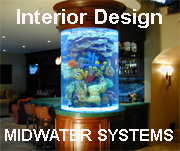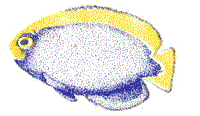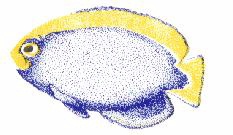|
The “So You Can Go Out of Town for a Few Days” piece of equipment
By Chris Burns
Have you ever just wanted to get away from it all, take that much needed
drive down the coast, to the mountains, the river, the desert, or forest…
Just get up and go! What? What do you mean you CAN’T?!?!?
Ohhhh… you must be a seahorse keeper! Tied to the tank like a Spaniard
in Torquemada’s dungeons… Well, have I got news for you! Salvation
and freedom are at hand!
When free-feeding your horses, you have probably run into the common
dilemma of feeding enough that the horses get plenty to eat while not feeding
too much to the filter and substrate. This means that most of your
friends will not, without at least a bachelor’s degree in “Caring for My
Personal Aquarium”, be able to feed your herd should you wish to take a
break. And, to make matters worse, you couldn’t possibly just throw
enough food into the tank to last a few days… or could you? I would
like to give you the plans for a do-it-yourself feeder that will allow
you to put 2-4 ounces of live, adult brine shrimp in your tank for the
horses to feed on without fear of it all going into the filter. As
an added bonus, the feeder will, free of charge, retain all of the dead
brine shrimp carcasses so that when you return from your trip, you can
pull the feeder from the tank and flush all of those ammonia-generating
bodies down the drain!
So, without further ado, here are the particulars. The feeder
is a cylinder approx. 6-7" long and 2.25" in diameter, and I have had success
with a wide array of seahorse and pipefish species feeding from it.
There are three major components that you will need in order to construct
it, all of which you can get at your local hardware superstore (Home Depot
or wherever).
· One 7"x7" square of fiberglass screen door screen. The
holes in the screen will appear to be way to small for the food to pass
through.
· Two 2" plastic plugs. These should be in the plumbing
aisle with the PVC and ABS pipe. They are basically temporary plugs
used for repairing water pipes, and look like thin white disks with a depression
that sits in the pipe.
· Two 3/4" long sections of 2" Schedule 40 PVC pipe. These
will make the end caps. Fit the plugs into the pipe to be sure they
fit before buying the pipe (I tried it on the same kind of ABS pipe, but
the wall thickness was too great and the plugs wouldn't fit). Also,
most hardware stores will give you a "donation" of a couple of inches of
pipe, and you might even be able to get them to cut it for you!
· Crazy glue (I recommend gel)
· Aquarium grade silicone sealer. Be sure you get AQUARIUM
GRADE because it is made with vinegar, as opposed to regular silicone,
which is made with ammonia!
Be sure to wash and clean everything off before you begin. :>
Now, using the crazy glue gel, glue one plug into one of the pipes.
Next, tack the screen onto the outer surface of one of that pipe with
the crazy glue. The pipe should fit inside of the screen so that
the out edge of the pipe and screen are even. The screen SHOULD overlap
when going around the pipe. Then, do the same on the other pipe.
Now you have the cylinder with one opening. Next, run a bead of silicon
over the overlapping seam. Smooth it out to ensure even contact.
Next, I took and smeared a smooth bead of silicone over the entire surface
where the screen contacted the pipes. Let it dry for a few hours,
and viola!
Now, place the sealed end into the tank, put some live food in, and
seal the other end with the plug. Lay it down somewhere conspicuous
and watch the fun!!!
If you would like to purchase a pre-made feeder, and let me tell you,
these are EXCELLENT! Check out Paul Baldassano’s (the inventor) at
http://www.breeders-registry.gen.ca.us/Articles/v4_i3_paul_b/paul_b.htm
Feel free to contact Chris at: cburns@mythosproductions.com
|











